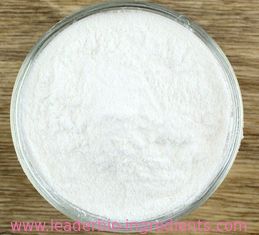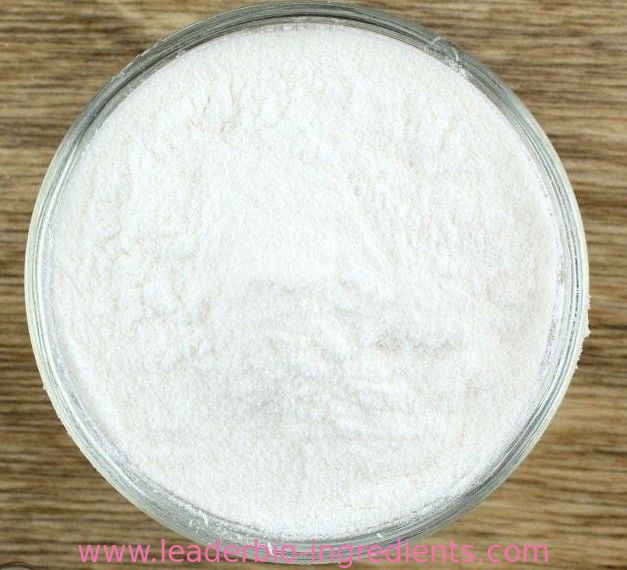| Description |
Sodium ascorbate is sodium salt of ascorbic acid (commonly known as vitamin C), which is approved for use as a food additive in many countries. Sodium ascorbate is consisted of a combination of sodium and vitamin C, which commonly serve as an antioxidant and an acidity regulator in pharmaceutical manufacturing and in the food industry. In this mixture, sodium acts as a buffer, creating a less acidic supplement than those made entirely from vitamin C. It can be easier to tolerate if the digestive system is sensitive to acid. As a vitamin C supplement, it provides both sodium and vitamin C for human body, which is effective to prevent or treat vitamin C deficiency. Besides, studies have shown that taking sodium ascorbate is helpful with cancer prevention and treatment. |
| References |
https://en.wikipedia.org/wiki/Sodium_ascorbate
http://www.livestrong.com/article/348175-what-are-the-health-benefits-of-sodium-ascorbate/
http://pets.webmd.com/drugs/2/drug-63684/ascorbic-acid-ascorbate-sodium-oral/details |
| Chemical Properties |
Sodium ascorbate occurs as a white or slightly yellow-colored, practically odorless, crystalline powder with a pleasant saline taste. |
| Chemical Properties |
white to off-white solid |
| Uses |
L-Ascorbic acid (Vitamin C) is a water soluble molecule used in a wide variety of applications, including cell culture, as a reducing agent that helps reduce oxidative stress. |
| Uses |
As antimicrobial and antioxidant in foodstuffs. |
| Uses |
Sodium Ascorbate is an antioxidant that is the sodium form of ascorbic acid. it is soluble in water and provides a nonacidic taste. a 10% aqueous solution has a ph of 7.3–7.6. in water, it readily reacts with atmospheric oxygen and other oxidizing agents, making it valuable as an antioxidant. one part sodium ascorbate is equivalent to 1.09 parts of sodium erythorbate. see ascorbic acid. |
| Definition |
ChEBI: An organic sodium salt resulting from the replacement of the proton from the 3-hydroxy group of ascorbic acid by a sodium ion. |
| Production Methods |
An equivalent amount of sodium bicarbonate is added to a solution of ascorbic acid in water. Following the cessation of effervescence, the addition of propan-2-ol precipitates sodium ascorbate. |
| Brand name |
Ascorbin (Marion Merrell Dow). |
| General Description |
Minute crystals or white powder. pH of aqueous solutions 5.6 to 7.0 or even higher (a 10% solution, made from a commercial grade, may have a pH of 7.4 to 7.7). |
| Air & Water Reactions |
Water soluble. Aqueous solutions are subject to quick air oxidation at pH greater than 6.0. |
| Reactivity Profile |
A weak base. Materials in this group are generally soluble in water. The resulting solutions contain moderate concentrations of hydroxide ions and have pH's greater than 7.0. They react as bases to neutralize acids. These neutralizations generate heat, but less or far less than is generated by neutralization of the bases in reactivity group 10 (Bases) and the neutralization of amines. They usually do not react as either oxidizing agents or reducing agents but such behavior is not impossible. |
| Health Hazard |
SYMPTOMS: Ingestion of 10 grams or more of this type of compound may cause diarrhea. |
| Fire Hazard |
Flash point data for Sodium ascorbate are not available. Sodium ascorbate is probably combustible. |
| Pharmaceutical Applications |
Sodium ascorbate is used as an antioxidant in pharmaceutical formulations, and also in food products where it increases the effectiveness of sodium nitrite against growth of Listeria monocytogenes in cooked meats. It improves gel cohesiveness and sensory firmness of fiberized products regardless of vacuum treatment.
It is also used therapeutically as a source of vitamin C in tablets and parenteral preparations. |
| Safety Profile |
Human mutation data reported. When heated to decomposition it emits toxic fumes of Na2O. |
| Safety |
The parenteral administration of 0.25-1.00 g of sodium ascorbate, given daily in divided doses, is recommended in the treatment of vitamin C deficiencies. Various adverse reactions have been reported following the administration of 1 g or more of sodium ascorbate, although ascorbic acid and sodium ascorbate are usually well tolerated; see Ascorbic acid. There have been no reports of adverse effects associated with the much lower concentrations of sodium ascorbate and ascorbic acid, which are employed as antioxidants.
The WHO has set an acceptable daily intake of ascorbic acid, potassium ascorbate, and sodium ascorbate, as antioxidants in food, at up to 15 mg/kg body-weight in addition to that naturally present in food. |
| storage |
Sodium ascorbate is relatively stable in air, although it gradually darkens on exposure to light. Aqueous solutions are unstable and subject to rapid oxidation in air at pH > 6.0.
The bulk material should be stored in a well-closed nonmetallic container, protected from light, in a cool, dry place. |
| Incompatibilities |
Incompatible with oxidizing agents, heavy metal ions, especially copper and iron, mnamine, sodium nitrite, sodium salicylate, and theobromine salicylate. The aqueous solution is reported to be incompatible with stainless steel filters. |
| Regulatory Status |
GRAS listed. Accepted for use as a food additive in Europe. Included in the FDA Inactive Ingredients Database (IV preparations; oral tablets). Included in nonparenteral and parenteral medicines licensed in the UK. Included in the Canadian List of Acceptable Non-medicinal Ingredients. |

